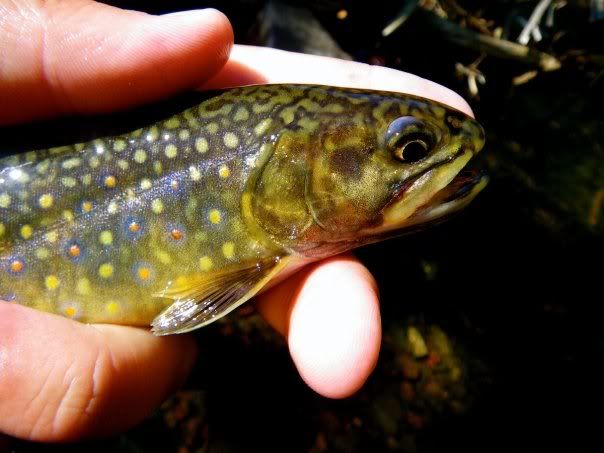
Fly fishing small streams is often one of the most successful and rewarding styles of fly fishing. It can however be one of the more tricky and adventurous ways as well. Having fly fished small streams (I classify these as less than thirty feet in width to just over a foot wide with the average somewhere around 15 feet in width) for most of my life including my 11 years in Southeast Alaska, my time in Canada and my eight years here in Montana I've experienced some of my best fishing adventures on small streams that rarely see an angler a day and most often go months without fishing. Here are some of the techniques I use in fishing for small-stream trout from the basic, to the not so obvious.
The first, is how to find a small stream that no one fishes. My rule of thumb here in Montana is hit a gravel road, and keep going. I've found so many of my favorite streams by just hitting the road, getting my Explorer a little dusty. Now, a topography map can be useful and knowing a rancher or two can help out, but chances are if you hit a gravel road you'll run into both. You could just drive over the stream, hop out and go to the nearest house and ask "I'm out enjoying the day and I was wondering if I could fish this small creek near your house?" Most often I've gotten the reply "We'll there's only little ones in there but you can definitely go try!"
Once you've found a small stream it's best to keep it a secret, meaning George your uncles friend and your neighbor Bob need not know where you're going. This keeps the pressure to a minimum (which small streams tend to handle pressure very poorly) plus it means you wont be combat fishing for the 6" brookie under that log.
Second, is remembering where you're going. I usually do this by visiting my friends at Google Earth and by marking it with a flag. You can see what I mean by visiting www.google.com/earth and downloading the software. Once you flag it you can put down some basic notes such as the species of fish you caught, the flies that worked, and the hatches etc. This will act as a catch report and record and will also help you find the location again.
Casting can often be one of the most difficult parts of fishing a small stream. Lots of brush combined with tricky lays ("holes" in layman terms). I often will go without doing a back cast for hours because the dense foliage behind me, and therefore have to use either the roll or "bow and arrow" casts. These casts are very basic, and you can find basic instructions on YouTube (perhaps the greatest fly casting tool other than a fly shop) or in most casting book.
If you're interested in fishing some small streams but dont know where to go give us a call and we'll let you in on some local waters.



